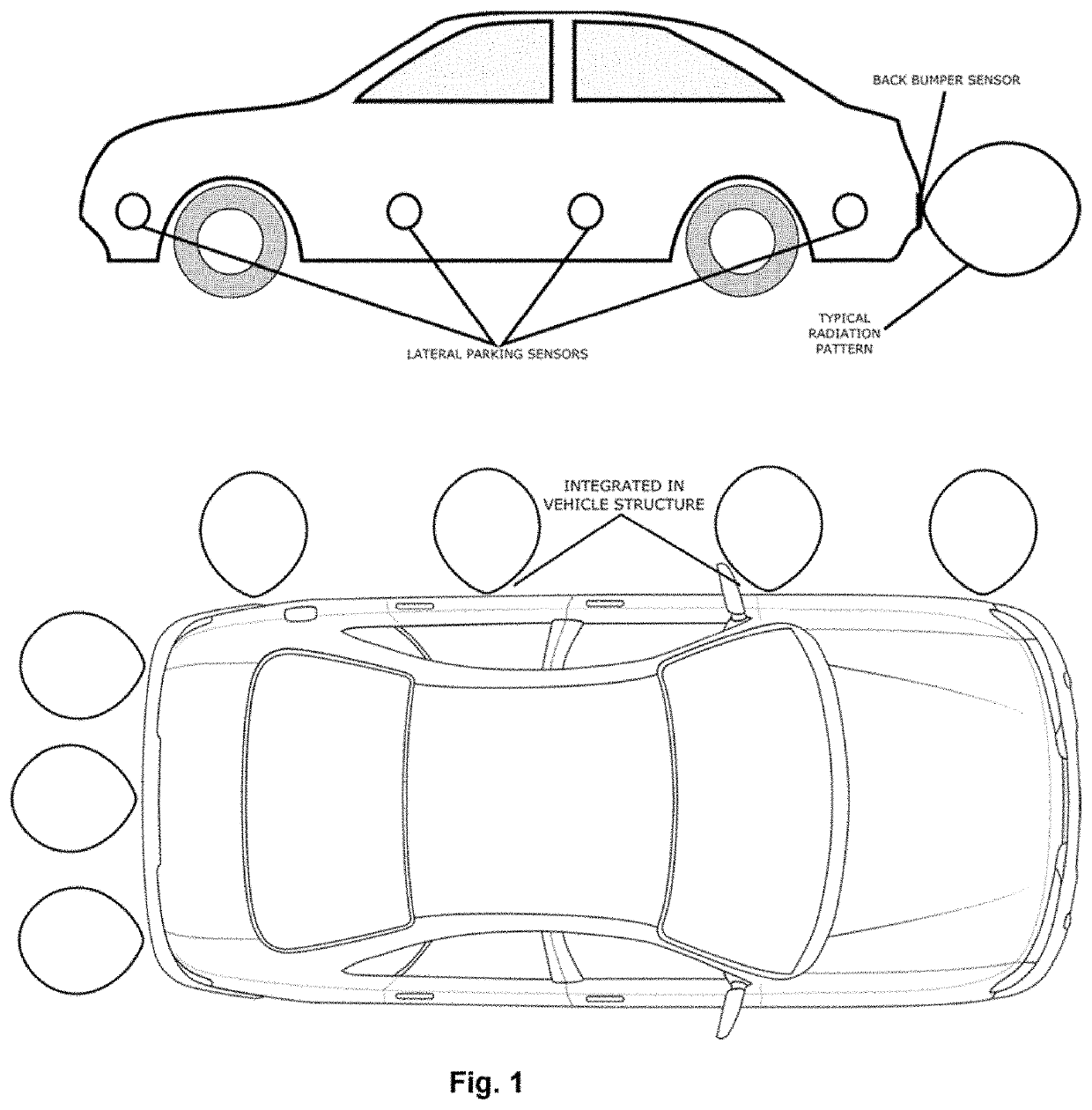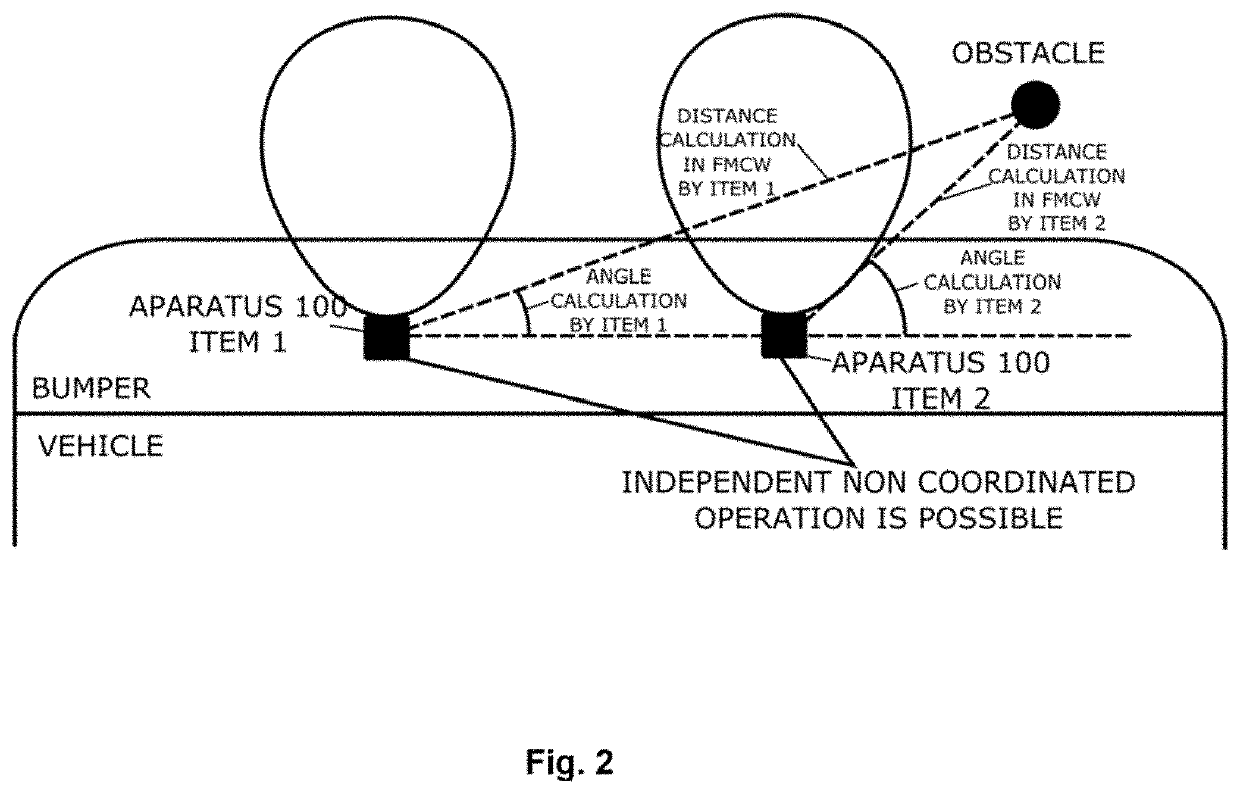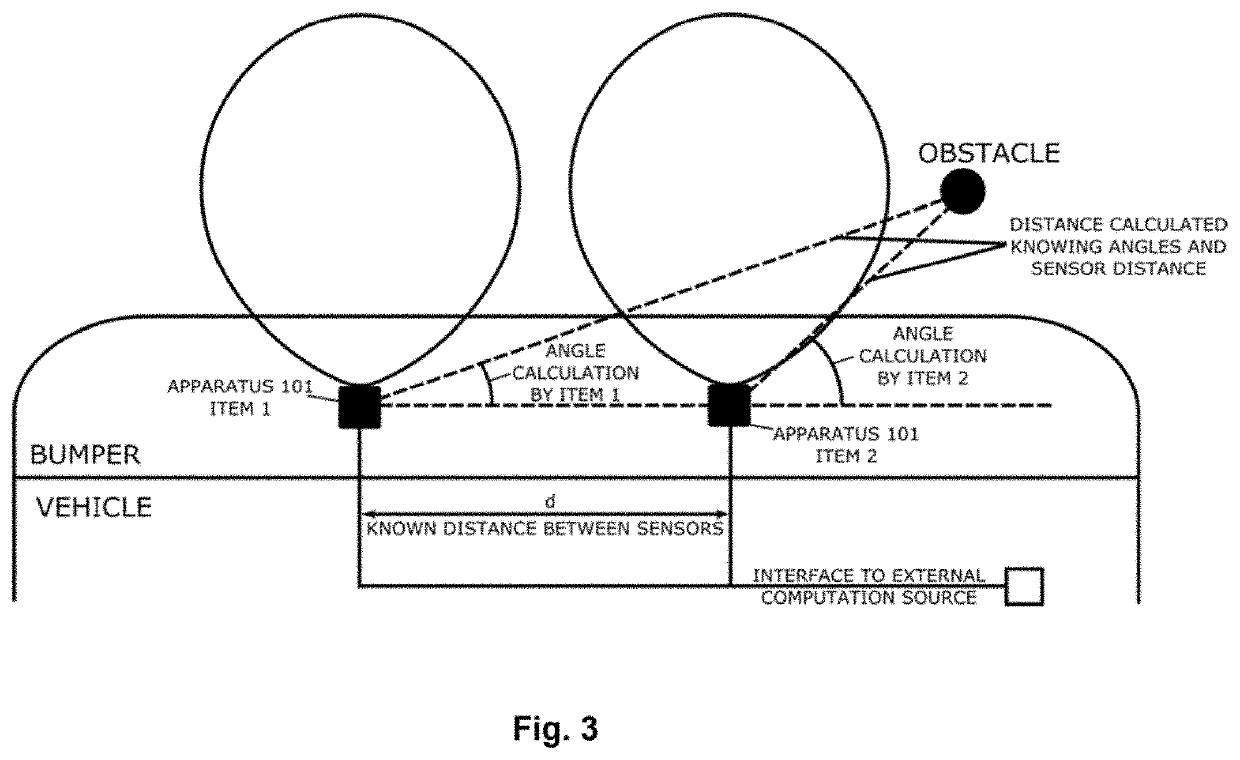Millimeter-wave sensor system for parking assistance
a sensor system and millimeter wave technology, applied in the field of parking support apparatus, can solve the problems of inability to get information if the obstacle is visible, and high cost of such system with antenna and assembly
- Summary
- Abstract
- Description
- Claims
- Application Information
AI Technical Summary
Benefits of technology
Problems solved by technology
Method used
Image
Examples
Embodiment Construction
[0105]The proposed apparatuses 100, 101, 102a and 102b perform calculation of the distance and angle of the obstacle. The Apparatus 100 allows additionally and optionally to explore the parking obstacles vibrations, being able to detect a living being, in case of vital signs detection.
[0106]Entity 100 enables three different modes of radar operation:[0107]FMCW operation for distance calculation[0108]CW mode for parking obstacle angle calculation, with sets of power detectors and optional[0109]Doppler type of operation in CW mode, for vibration detection.
[0110]The proposed invention has in entity 10 fractional N PLL being able to address the complete frequency band of operation, being regulatory allocated for the operation of the devices. In case of automotive frequency band 77-81 GHz, the PLL is addressing the full 4 GHz bandwidth, which allows high resolution bandwidth, also without special digital processing techniques. Through frequency ramp bandwidths of up to 10 GHz, in mm-wave...
PUM
 Login to View More
Login to View More Abstract
Description
Claims
Application Information
 Login to View More
Login to View More - R&D
- Intellectual Property
- Life Sciences
- Materials
- Tech Scout
- Unparalleled Data Quality
- Higher Quality Content
- 60% Fewer Hallucinations
Browse by: Latest US Patents, China's latest patents, Technical Efficacy Thesaurus, Application Domain, Technology Topic, Popular Technical Reports.
© 2025 PatSnap. All rights reserved.Legal|Privacy policy|Modern Slavery Act Transparency Statement|Sitemap|About US| Contact US: help@patsnap.com



